What is this?
Line 10* is a proposal for a 22-station, 49-km light metro line serving Toronto's Midtown corridor. Modelled after Montréal's Réseau express métropolitain, it is meant to provide subway-quality service across the city at speeds appropriate for medium-distance travel. To achieve this, automated trains operate on an alignment fully grade-separated from existing roads and railways, with stations farther apart than on a traditional subway.
*At time of writing, line 10 was not yet assigned to the Hurontario LRT
The case for the Midtown line
Line 10 line map and info sheet. Click image to expand
Toronto's subway is short on capacity, being a sparse network tasked with the role of providing rapid transit to a vast and populous city. The future holds promise: the subway is growing, and upcoming improvements to regional rail service and integration will allow GO to pick up some slack. However, GO remains Union-centric, so the bulk of east-west travel demand to and through Toronto's inner northern tier will continue to fall on Bloor and Eglinton. The short stop spacing of lines 2 and 5 is well-suited to handle local corridor trips and bus connections, but they lack the speed and capacity to take on crosstown traffic in the long run.
This undersized rail transit network results in rapid transit deserts. Local buses fill these gaps effectively in much of the region, at once driving rail ridership to its current state, but this mode's speed and capacity limits are comparatively low. In the densest and most distant of these gaps, it is worth looking into ways to reduce the strain on local transit.
Line 10 aims to relieve the existing bus and subway network of medium-distance travel demand by providing an express layer of service across the city. In doing so, it connects Mississauga Centre to Malvern in roughly an hour – a 50% reduction from today's trip time, given the 401 is behaving – also serving nodes in Etobicoke, the Stockyards, and Agincourt along the way. Through proposed connections to Toronto's existing rapid transit lines, line 10 facilitates onward travel to Downtown Toronto, Scarborough Centre, and various points in North York; and through the GO network, to the airport, York Region, Brampton, and Kitchener-Waterloo.
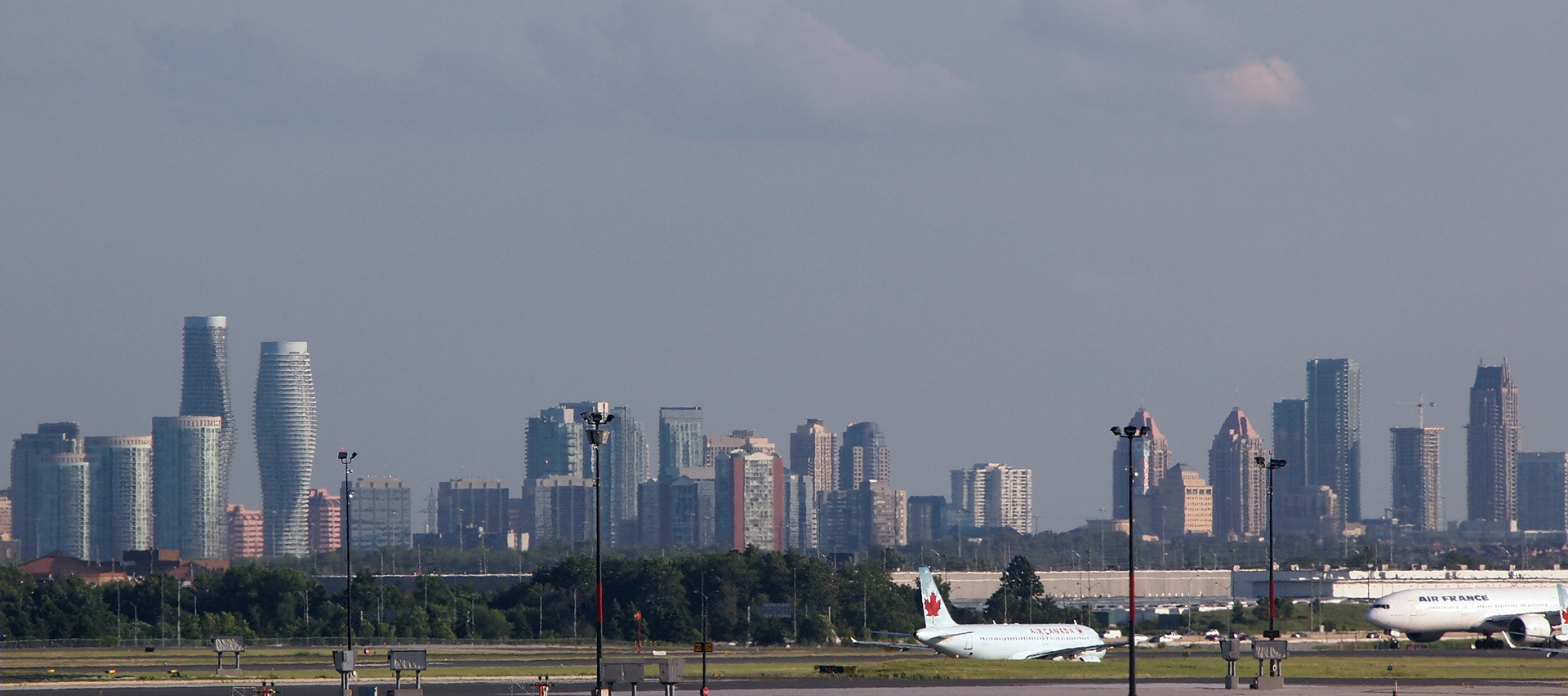
Mississauga Centre | CC BY-SA 3.0 Haljackey
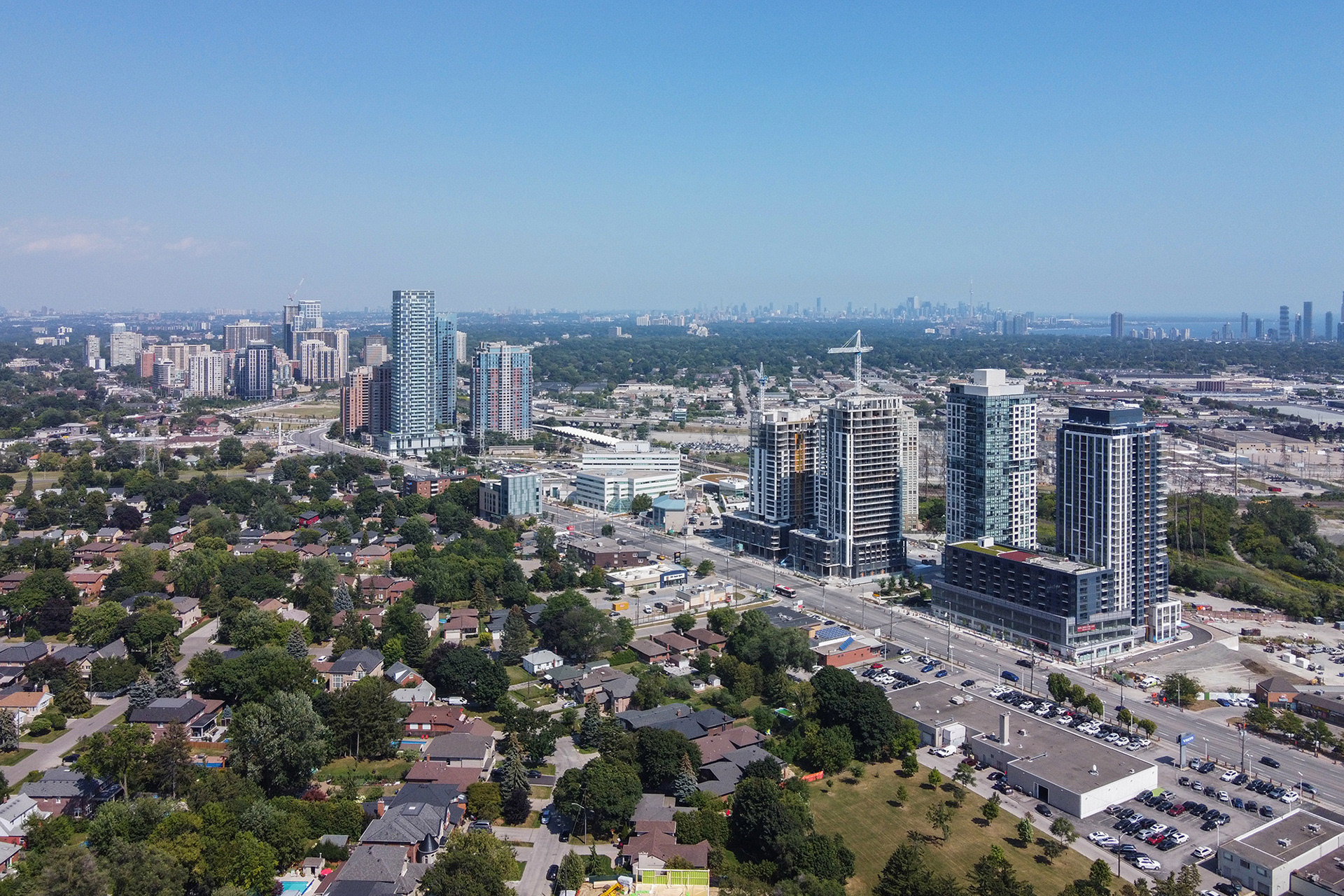
Islington | CC BY 4.0 Canmenwalker
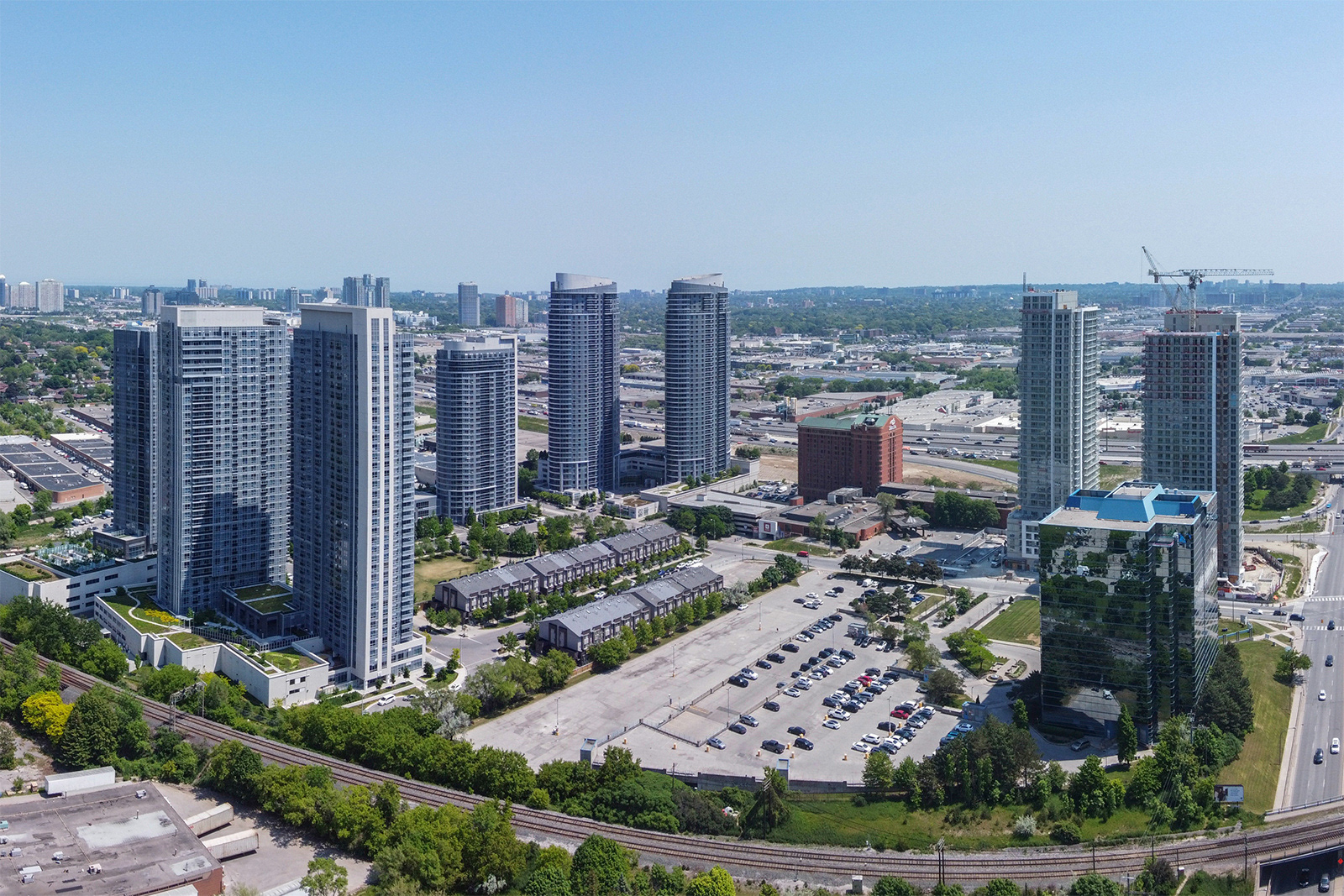
Agincourt | CC BY 4.0 Canmenwalker
On light metro
Most informal talk of passenger rail on the Midtown line assumes a main line service, likely due to the presence of main line tracks along the whole corridor and the long length of the trips it most optimally serves. A main line Midtown project would probably involve construction of substantial dedicated trackage, as the corridor sees much freight traffic and CP are not known to be amenable to accommodating passenger service on their tracks. While they are unlikely to cede any of their right-of-way to a transit project without a fight, dedicated tracks will allow frequent service to operate in isolation of any present or future, freight or passenger main line traffic.
Given the numerous grade separations on the existing corridor, the addition of two tracks fit for surface metro operation should be relatively simple. In this context, however, the advantage of metro lies in the ease of diverging from the corridor to serve nodes and connect with other lines. Small metro trains can handle sharp curves on light viaducts and small tunnels, stopping at simple stations. This eliminates the need to build an expensive main line tunnel at Mississauga Centre, and it allows for direct connections where the corridor misses nearby stations. Automated operations enable high service frequency and reliability at all hours, maximizing the benefits of these investments.
Vancouver SkyTrain
CC BY-SA 4.0 Northwest
Diversions from the corridor
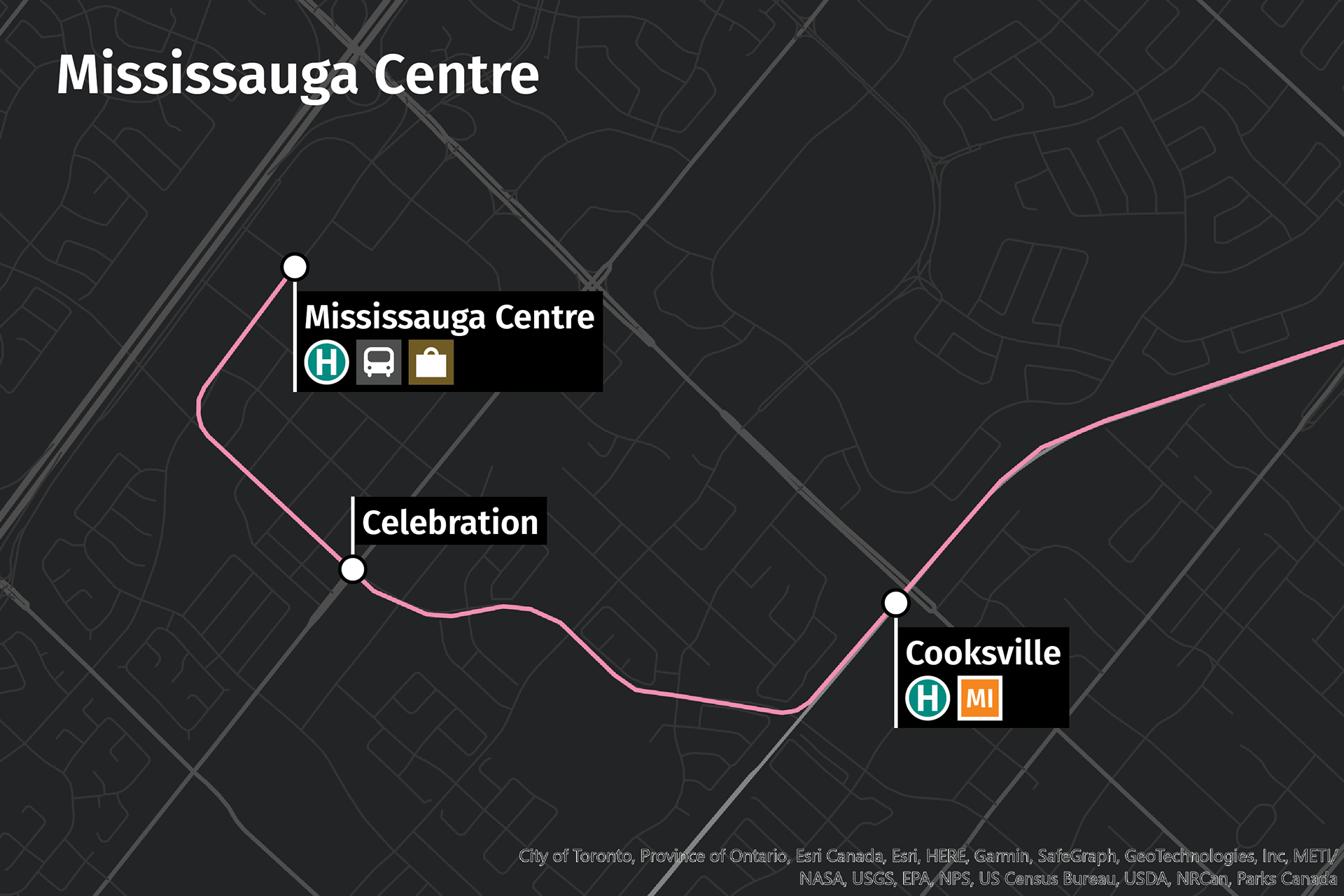
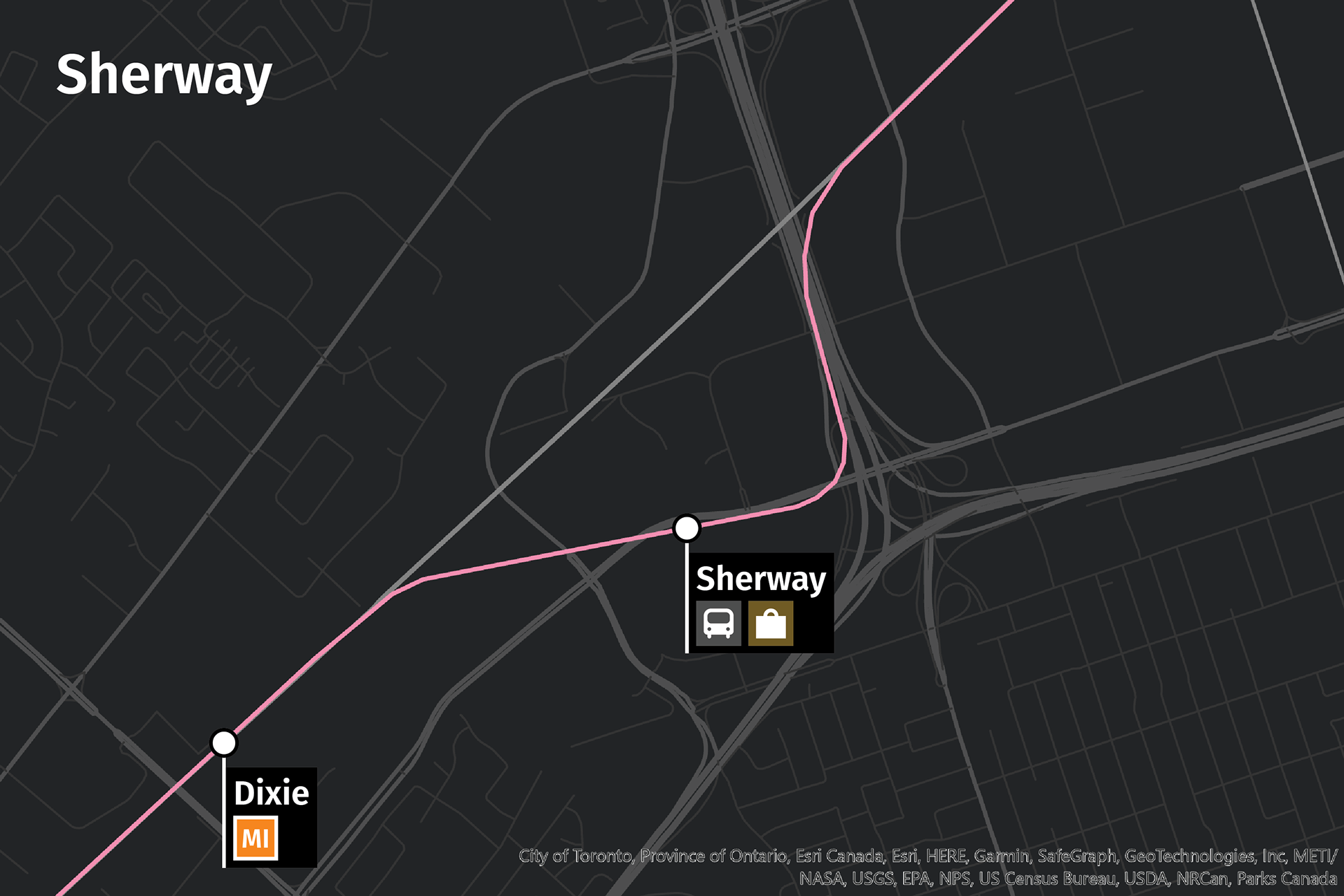
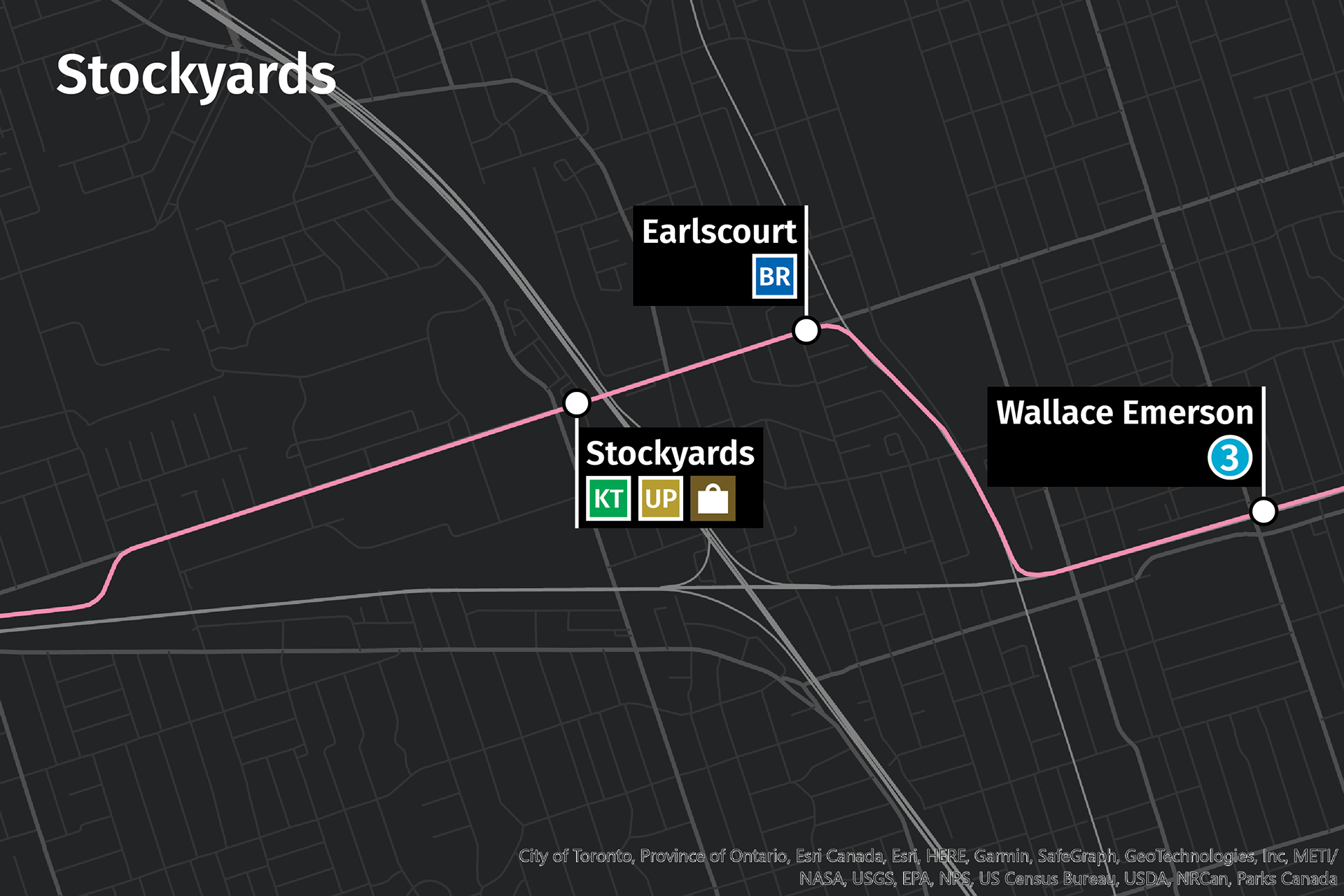
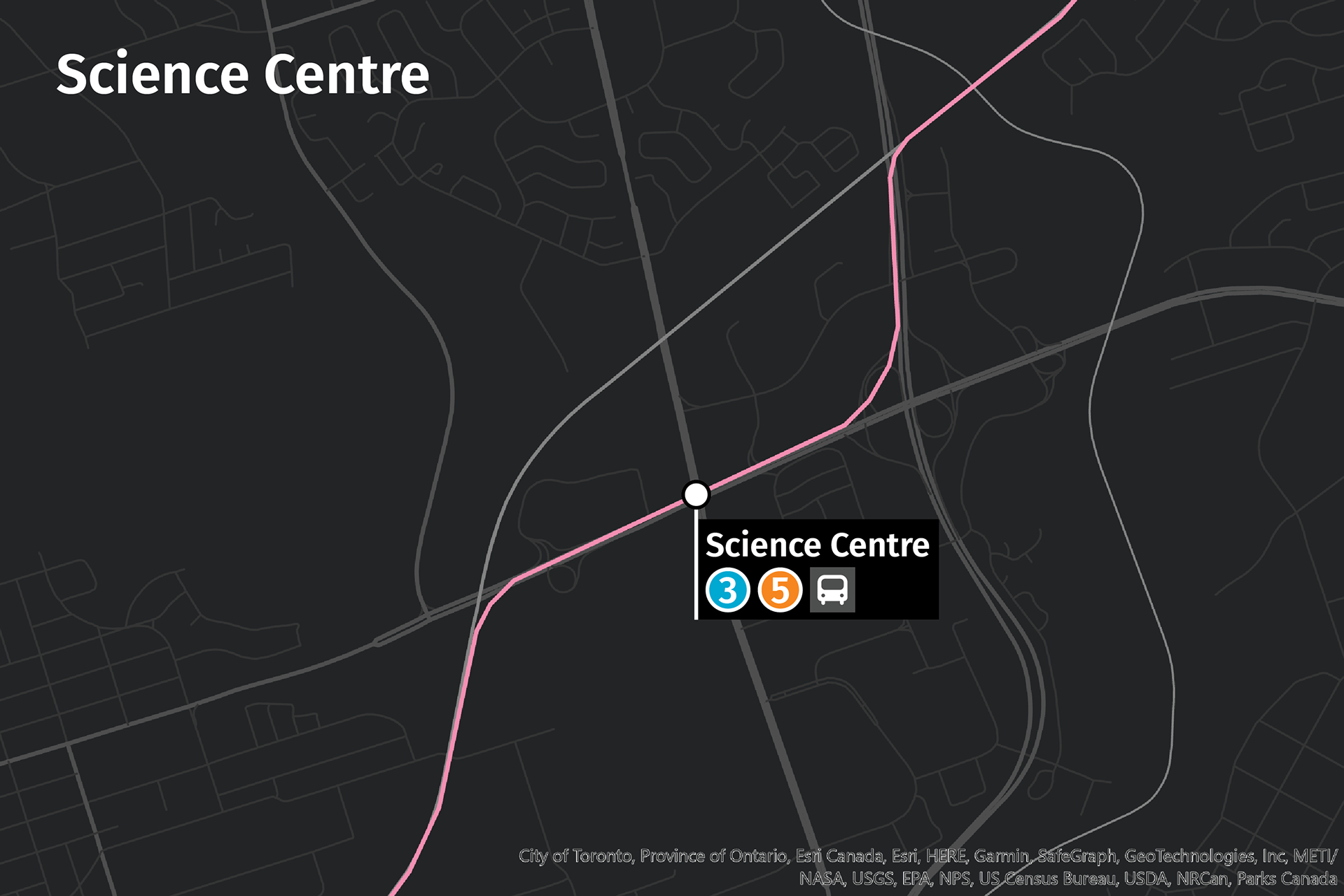
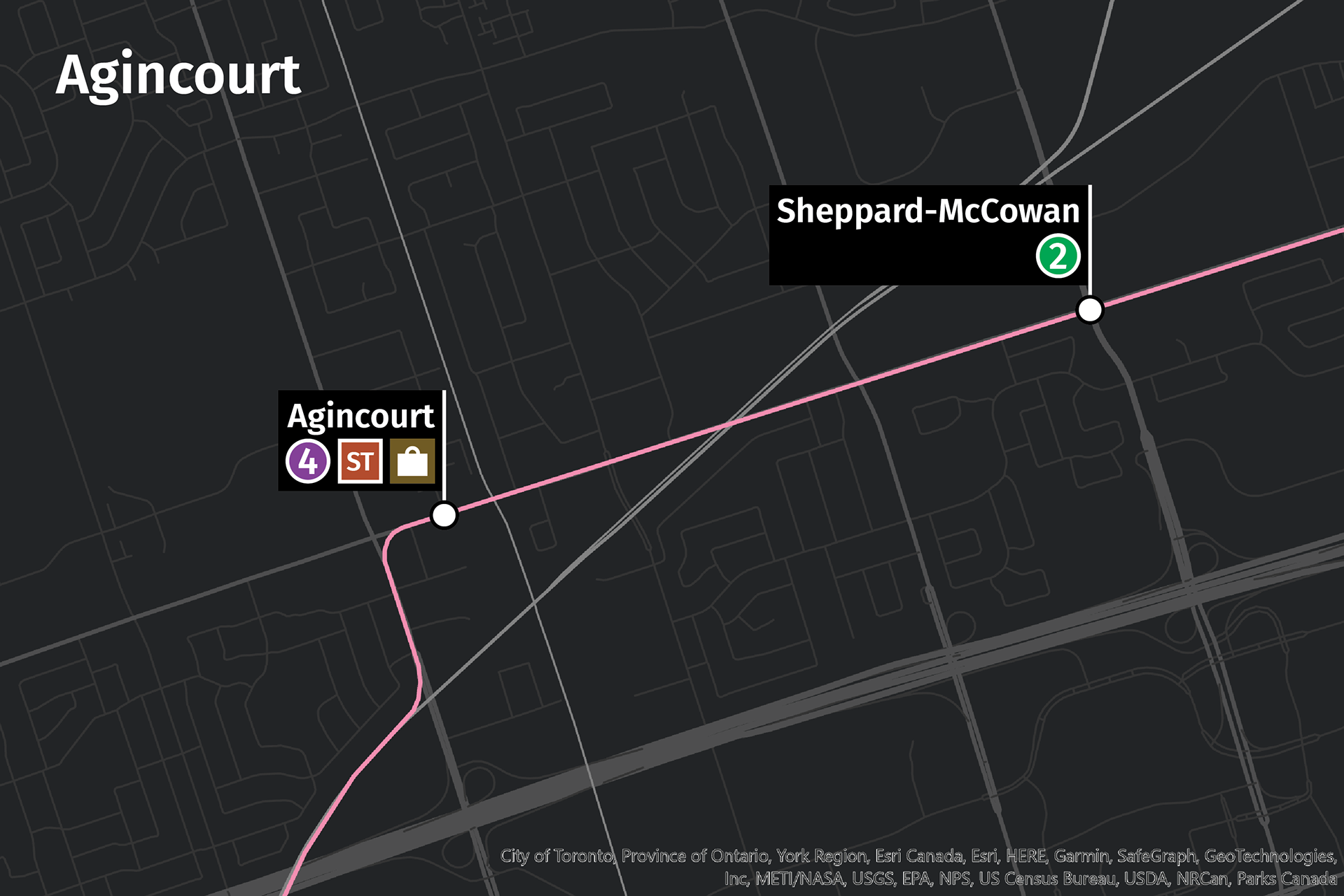
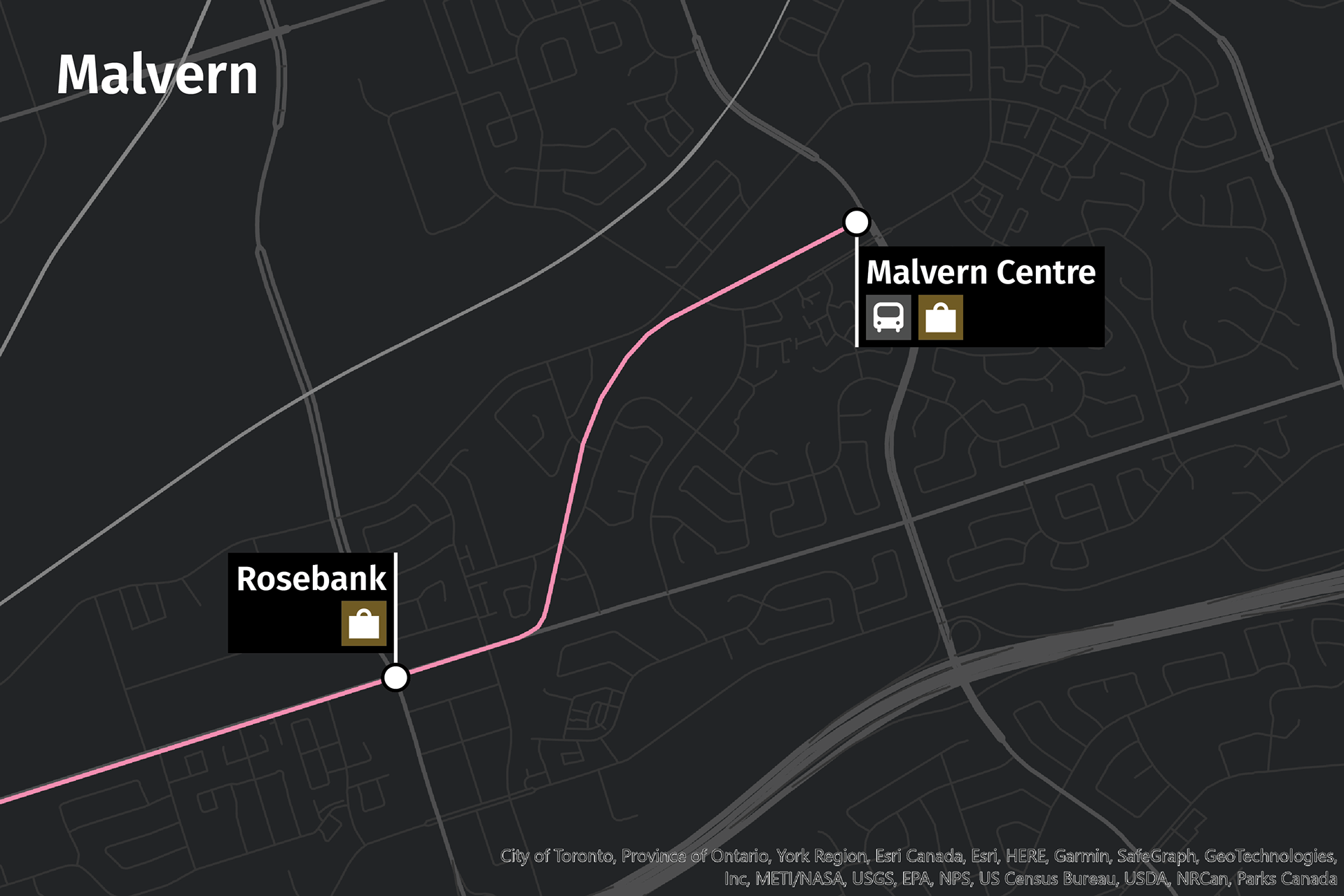
Related proposals
The following are proposed rail extensions or modifications that affect line 10 connectivity.
Line 2 to Long Branch is a short, at-grade extension of this subway line using existing rail rights-of-way. Its main purpose is to facilitate travel between line 10 in Etobicoke Centre and onward Lakeshore West destinations, such as Port Credit and Hamilton.
Line 3 (Ontario line) up Dufferin Street provides subway service to one of central Toronto's busiest bus corridors. It also adds a connection between line 10 and Toronto's western core via Exhibition GO.
Line 3 to Seneca College extends this line up Don Mills Road to Finch Avenue, improving travel between line 10 and eastern North York destinations.
Line 4 to Scarborough is a long extension of this line to Scarborough Centre, continuing to UTSC via Ellesmere Road. This provides a one-seat ride between Scarborough and North York Centres, which line 10 riders can access by changing at the intermediate hub of Agincourt. Current plans call for line 4 to terminate at Sheppard-McCowan; however, turning towards Ellesmere east of Agincourt allows for direct access to Scarborough Centre and an extension to UTSC.
Don line RER electrifies and realigns the Richmond Hill line on a currently unused, more direct right-of-way. This acts as an express alternative to line 1 (Yonge) for faster trips between downtown Toronto, eastern North York, and Richmond Hill. This connects to line 10 at Millwood station in Thorncliffe Park.
Name
Line 10 is so numbered to subtly distinguish it from the more local existing subway lines, and because it does line 5's job twice as well. Space is left on the number line for the reader's conjectures regarding the numeration of the region's several upcoming rail lines.
Réseau express Midtown is a tongue-in-cheek bastardization of Réseau express métropolitain, the system on which line 10 is heavily based. Don't come for me.

